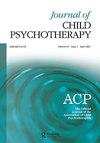白的工作:精神分析的视角
IF 0.8
Q4 PSYCHOLOGY, CLINICAL
引用次数: 0
摘要
这本书以“白人”的经历为中心,以及它如何在一个系统性种族主义社会中运作。作者海伦·摩根(Helen Morgan)是白人,她在本书的序言中观察到,这是身份的一个方面,可以被视为“正常”或不可见,因此她可以选择完全无视它和种族主义话题。这本书对这一立场提出了挑战,并令人信服地认为,白人不按照种族界限看待世界,不承认他们继承的特权,这表明了一种内在的“盲目”或“愚蠢”,这种盲目或愚蠢会保留种族主义和白人至上主义。Morgan认为,通过选择“对我们生活和我们自己的一个关键方面保持无意识”(第十三页),我们阻碍了个性化的道路。种族主义伤害了我们所有人;这本书探讨了为什么,如果是这样的话,种族主义仍然在社会中发挥作用,以及为什么精神分析界可能一直并仍然抵制更深入的探索和行动来解决和理解它。这本书的引言以一个明确的声明开始,即人类没有按种族划分的生物学或遗传学基础。虽然这种对事实的提醒可能会让一些人觉得没有必要,但它澄清了我们所思考的是一个出于社会、经济和政治原因而产生的、没有客观根源的制度。这本书接着概述了英国民权运动的历史,并定义了整本书中使用的术语。Morgan随后概述了为什么对种族主义的精神分析观点很重要。她表示,尽管作为一种职业,我们已经发展和完善了关于种族主义思想或行为如何从个人心理中产生的理论,但我们忽视了更大的社会经济决定因素,即我们西方世界出生的“种族主义模板”。Morgan认为-本文章由计算机程序翻译,如有差异,请以英文原文为准。
The work of whiteness: A psychoanalytic perspective
This book centres on the experience of ‘whiteness’, and how it operates within a systemically racist society. The author, Helen Morgan, is white, and observes in the preface to this book how this is an aspect of identity that can be experienced as ‘normal’ or invisible, therefore allowing her the option to disregard it, and the topic of racism, altogether. This book is a challenge to that position, and convincingly argues that for white people not to see the world along racial lines, and acknowledge their inherited privilege, points to an internal ‘blindness’ or ‘dumbness’ that preserves racism and white supremacy. Morgan argues that by choosing to ‘remain unconscious of a crucial aspect of our lives and ourselves’ (p. xiii), we block our path to individuation. Within this is the idea that racism hurts us all; the book explores why then, if this is the case, racism remains functional within society, and why the psychoanalytic community may have been, and remains, resistant to deeper exploration and action to address and understand it. The introduction to this book begins with a clear statement that there is no biological or genetic basis for humans to be divided by race. While this reminder of the facts may strike some as unnecessary, it clarifies that we are thinking about a system that arose for social, economic, and political reasons, and has no objective origin. The book goes on to outline the history of the civil rights movement within the UK, and defines terms used throughout the book. Morgan then outlines why a psychoanalytic perspective on racism is important. She suggests that while, as a profession, we have developed and refined theories on how a racist thought or act emerges from within an individual's psyche, we have disregarded larger socio-economic determinants, the ‘racist template’ into which we in the Western world are born. Morgan argues that -
求助全文
通过发布文献求助,成功后即可免费获取论文全文。
去求助
来源期刊

JOURNAL OF CHILD PSYCHOTHERAPY
PSYCHOLOGY, CLINICAL-
CiteScore
0.70
自引率
50.00%
发文量
46
期刊介绍:
The Journal of Child Psychotherapy is the official journal of the Association of Child Psychotherapists, first published in 1963. It is an essential publication for all those with an interest in the theory and practice of psychoanalytic psychotherapy and work with infants, children, adolescents and their parents where there are emotional and psychological problems. The journal also deals with the applications of such theory and practice in other settings or fields The Journal is concerned with a wide spectrum of emotional and behavioural disorders. These range from the more severe conditions of autism, anorexia, depression and the traumas of emotional, physical and sexual abuse to problems such as bed wetting and soiling, eating difficulties and sleep disturbance.
 求助内容:
求助内容: 应助结果提醒方式:
应助结果提醒方式:


